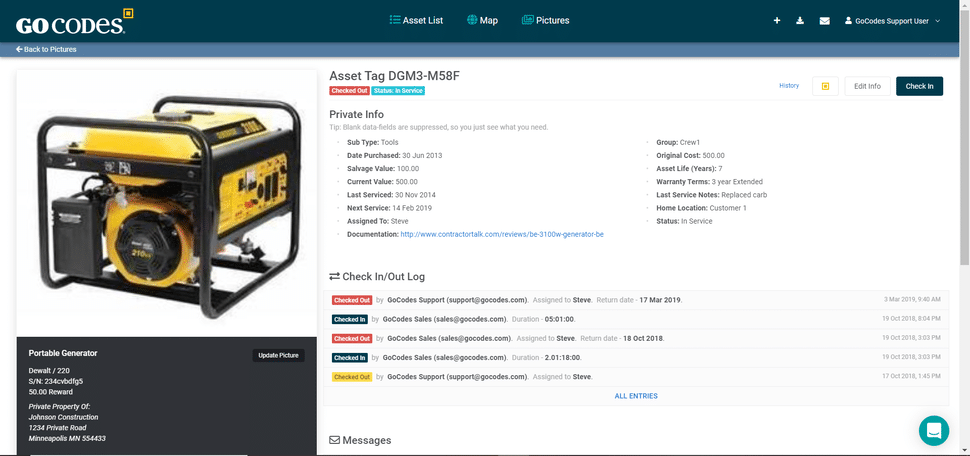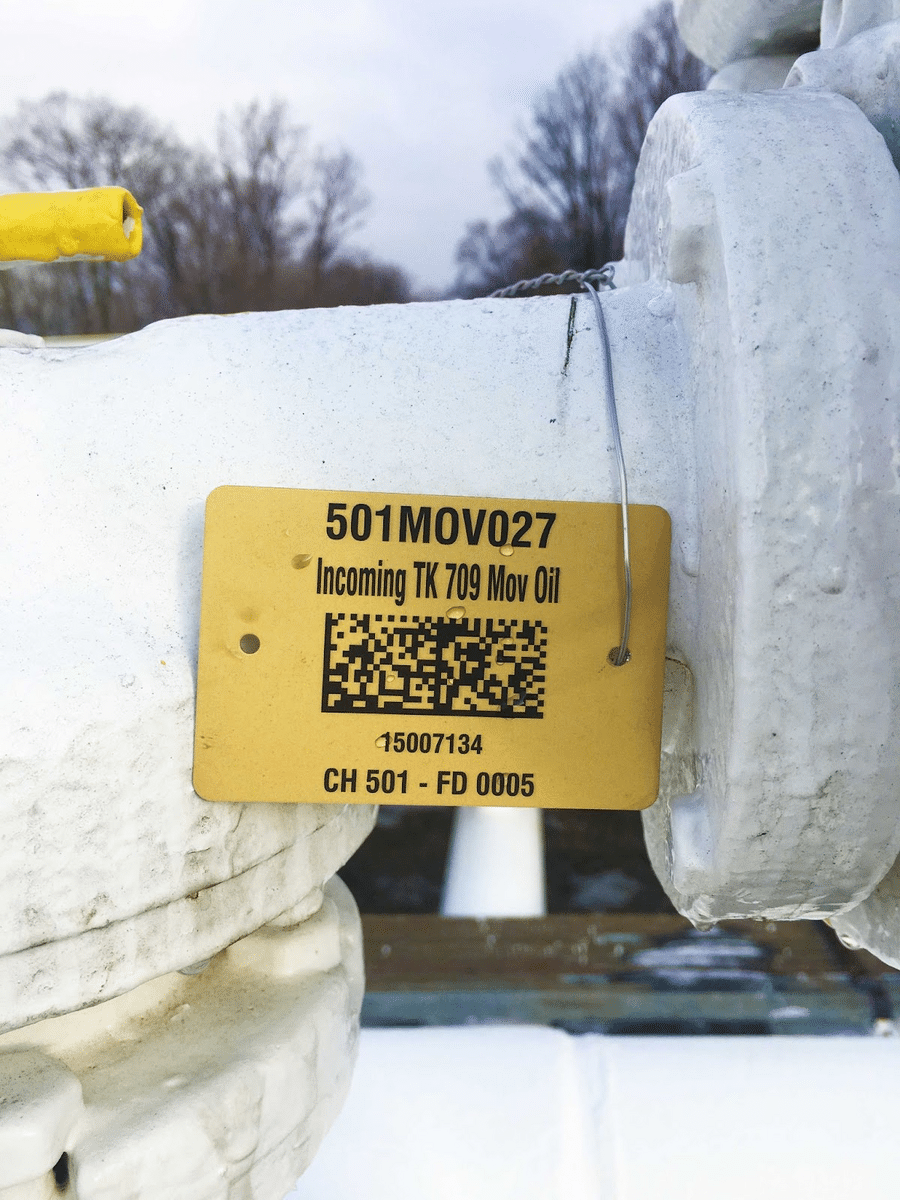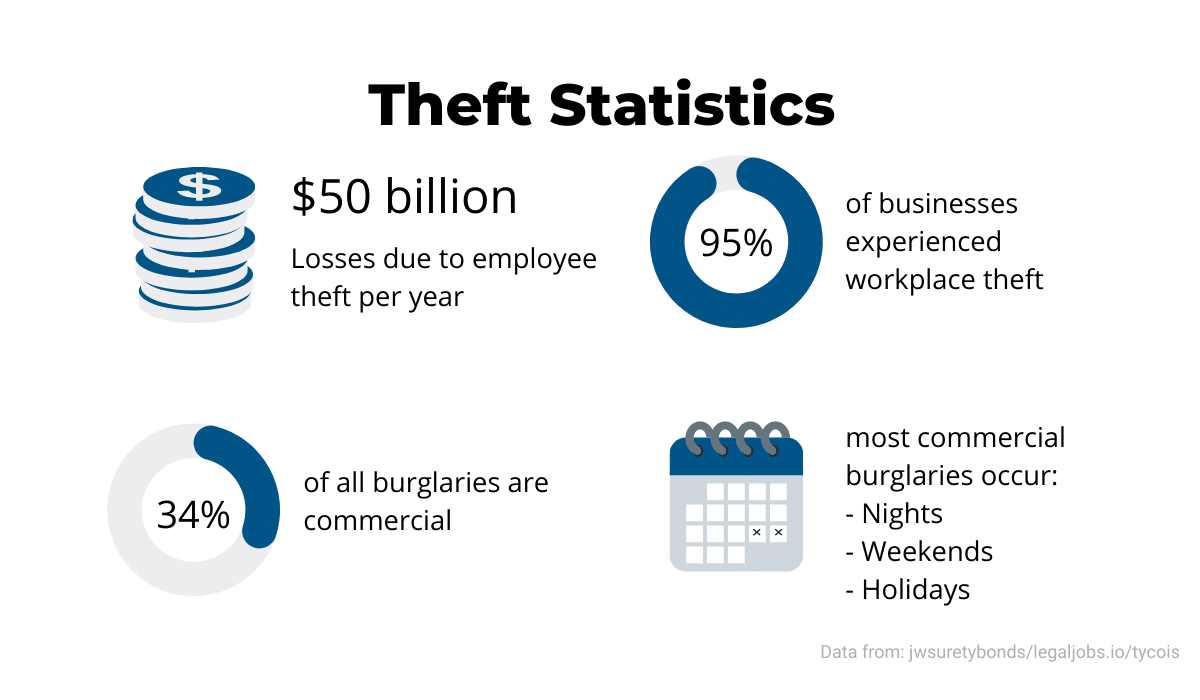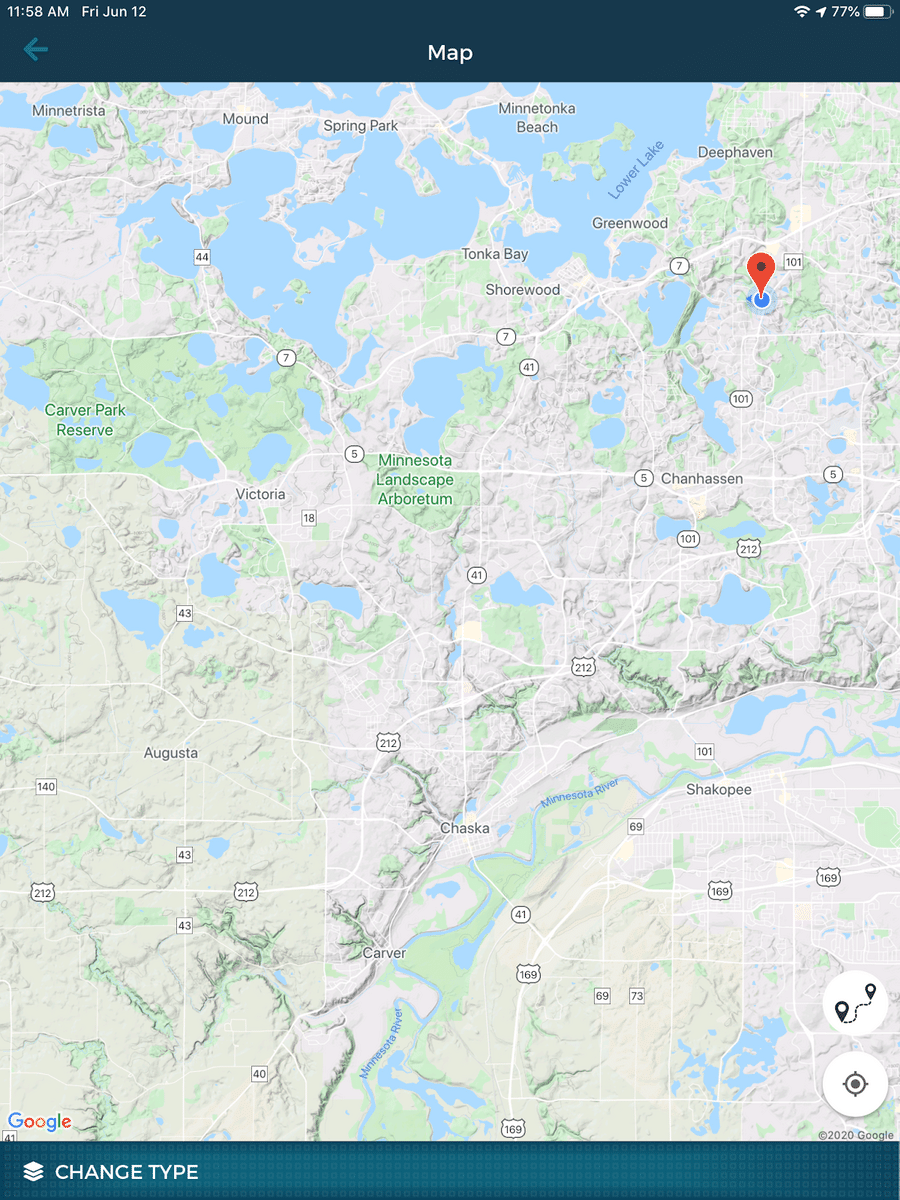Looking for reasons why your business should use asset labels?
You came to the right place.
We will go through the main reasons why asset tagging is a must-have solution for businesses across many industries, regardless of size.
Let’s start.
In this article...
Automated Inventory Control
Asset labels help automate the way you keep track of all assets your business uses.
This results in streamlined inventory management, substantial time savings, and enhanced analytical capacities of your business.
In addition, tracking your assets has never been more important.
With recent rising prices and supply chain disruptions, the ability to replace the assets crucial for your business may have diminished significantly.
And businesses are aware of that.
According to a Mordor Intelligence Report, the global asset tracking market is expected to grow by more than 50% by 2026.

So, how do asset tags help in inventory management?
First, they automate the data collection during inventory counts, thus reducing human errors and saving time.
Automation also allows managers to analyze the data more efficiently and get valuable insights.
Hence, asset tracking streamlines inventory control from end to end.
Assets are often tagged with barcodes or quick response (QR) codes as the simplest and most cost-effective solutions.

For example, our asset management software, GoCodes Asset Tracking, uses patented QR codes to facilitate efficient inventory management.
Here’s a recent Reddit conversation where a system administrator is looking for solutions to track the company’s IT equipment.

The following reply by a satisfied customer perfectly sums up how GoCodes Asset Tracking helped them keep track of their inventory and even get handy alerts when stocks were running low.

It’s clear from the above example that asset tags, coupled with the right software, can boost the efficiency of inventory management, giving your employees more time to be useful and your managers more data to make informed decisions.
Inexpensive Way to Keep Track of Your Assets
There are many ways companies track their assets.
This largely depends on company size and what kind of assets are tracked.
Among many solutions, asset labels come out as the most affordable and user-friendly solution for your business.
Nowadays, you can download free versions of asset management software and print the barcodes or QR codes yourself.
Or use something like this:

These pre-printed asset labels can be easily applied to any piece of equipment and assigned a unique serial number that will identify the item upon scanning.
This is a great option for smaller businesses environments that need a quick and easy way to keep track of their inventory with very little need for advanced options.
For larger operations, assets can be outfitted with QR codes that can carry a lot more information and paired with specialized asset tracking software.

This option comes at a higher price, but it’s still less expensive than hardware options, such as active GPS locators.
In addition, due to some advanced features like GPS locating and service information, this kind of asset tracking prevents a lot of theft and equipment loss, meaning you’ll actually be saving money.
And businesses are aware of that.
A new Juniper Research study showed that almost 90 million businesses used asset tracking solutions in 2021 and that their number will exceed 114 million by 2025.
So, considering that using asset labels and software pays off in the long run and that not monitoring assets can be very detrimental to your business, consider signing up for a free trial to see what we have to offer.
Requires No Substantial Investment
As said in the previous section, label tags are very low-cost and generate the best return on investment, thus saving you money in the long run.
When it comes to asset tracking, there are countless options on the market, some of which can be very expensive.
For example, tracking all machinery, equipment, and tools across multiple construction sites would require several types of asset tags.
Those that give you the real-time location of your assets (active GPS trackers, like the one from Particle below) offer maximum protection, but are also the most expensive.

However, even in this example from the construction business, a combination of such trackers and inexpensive asset tags would already make a significant dent in tracking system deployment costs.
Regardless of the setup costs, the savings achieved by using an efficient asset tracking solution can more than make up for your investment.
For instance, let’s use this quote by Brian Phillips, Superintendent at J&M Keystone, Inc.
“Since we’ve been using GoCodes Asset Tracking, we have reduced annual equipment loss from $30,000 to $1500”.
And here’s how they managed to do that.
They wanted to track close to 1,000 of their assets with a total value of about $600,000.
Their inventory counts in the previous years showed that about 10% of equipment was lost (or stolen) each year.
Since a trial showed that using GoCodes Asset Tracking asset tags can help recover more than 50% of assets lost, and J&M Keystone pays a $1,500 annual fee for tracking tags and cloud-based software, they save around $28,500 per year.
All these numbers are shown in this snapshot of the GoCodes Asset Tracking return-on-investment (ROI) calculator.

As this example clearly shows, asset tracking solutions offer a great ROI and can result in serious savings for your business.
Can Be Used in Every Industry
Although different forms of asset labels have existed for many years, technological advances have expanded their capabilities and made asset tracking benefits available to businesses of all sizes across different industries.
One would think that barcodes are used mostly in retail and shipping and QR codes in billing and marketing applications.
But their use spans across all industries, bringing specific benefits to each one.
We’ll just give one example of how asset labels or tags are used for tracking something that’s common to all industries—IT office equipment.
Let’s start with a quick market overview.

As you can see, the global hardware industry grew by more than 9% in 2021, and similar growth is expected near term.
Given the rise of remote work, companies now find this hardware, i.e., laptops and desktops, monitors, printers, and other devices scattered across multiple employee locations.
Naturally, they want to protect their investment, which often represents a significant portion of their budget.
And asset tags are a cost-efficient way to do that.
Tags can also be used to track various items in schools, colleges, and universities.
These institutions can opt to track high-value items that are routinely checked in and out, like projectors.
Or even those that frequently change position, like in this example.

And this is just one specific example. Basically, if your business has assets, you can track and manage them.
In other words, asset labels have their place in many industries.
Education, healthcare, construction, warehousing, and leasing are among the largest ones where asset tags coupled with cloud-based software facilitate a quick transition to the world of remote work.
Above all, asset labels can be used to achieve greater efficiency, reduce maintenance costs, and improve employee accountability for company assets, thus protecting your investment.
Labels Are Easy to Create
Basically, you could use a free QR code generator and a printer to make your own asset labels.
It’s that simple.
However, making sure they stay firmly affixed and readable is more complex.
And integrating them into an asset management system even more so.
But now, there are low-cost solutions that take care of all three, thus helping your business establish an efficient asset management system.
When it comes to labels, they’re extremely easy to create.
As said, you can use any free barcode or QR code generator to do so.
Just google it.

Now you need to print them.
However, if your labels are going to be exposed to weather or wear-and-tear, or the items they’re on might be stolen, you’ll need to decide what kind of material to use.
Should they be waterproof, scratch-resistant, or tamper-evident like, for example, these?

Once that’s done, all you need is to decide on an asset management software to pour in your initial data, and the asset tracking system is ready.
However, if this sounds a little complex, how about a solution that covers all three of these steps at once?
For example, you can print your own GoCodes Asset Tracking labels on a regular printer and integrate them into an asset management system using nothing but your smartphone scanner and our cloud software.
However, if you need more durable labels to track your more rugged equipment, we offer a variety of solutions.

All in all, where asset management is concerned, there’s hardly a more convenient way to keep track of your equipment than the labeling system, since labels are so easy to create and apply.
Tags Are Designed for This Purpose
As said above, the success of tracking your assets will depend on how well labels or tags are attached to them and whether they can remain readable throughout the asset life cycle.
So, some prudent decisions in this matter can ultimately result in a more robust asset management system.
When it comes to readability (and some other things like data storage capacity), nowadays QR code asset tags are the way to go.

In other words, if your assets are frequently used or kept outdoors, they’re exposed to wear-and-tear, affected by the sun and other elements.
In such cases, you want them to stay legible.
Well, QR codes have high fault tolerance, meaning that the users’ smartphones can decode the information on them even if a part of the code is missing.
As for durability, there are two things to consider: material type and the affixing method.
For example, if your assets are going to be indoors but handled a lot, you can use poly-based, more resilient materials like this one.

However, some assets will require metal labels that can be welded on or attached with industrial-grade glue.
Others will call for labels made of durable polyester.
If there is a risk of theft, there are tamper-evident solutions like the ones we’ve seen in the previous section.
Hence, think carefully about what assets need to be tracked, and consider their movements as well as their operating and storage conditions while making your decision.
Follow this by extensive research before you decide on the type of labels.
This should help you establish a resilient asset tracking system.
Mitigate Theft and Loss Risks
Theft and loss prevention is an area where asset labels really shine.
The right tags can help find lost assets and deter potential theft, thus significantly reducing the related costs of acquiring new items while your business stands still.
And theft, both internal and external, is a problem.
The numbers below paint a clear picture.

The first row shows the magnitude of workplace theft.
The second row shows to what extent and when businesses are most exposed to external theft.
However, when your assets are labeled, you can monitor their usage and follow when they’re checked-out and returned.
In some cases, you can track their previous and, most importantly for lost or stolen assets, their last known GPS location.
At least that’s the case if you’re using GoCodes Asset Tracking GPS-enabled asset tracking innovation.
Our patented solution combines the power of QR codes, smartphones, and cloud software to provide the most affordable near real-time GPS tracking solution on the market.

Here’s how it works.
Every time your tagged asset is scanned with a smartphone, the GoCodes Asset Tracking label uses its GPS tracking function to inform our cloud-based software of the location of that asset.

It makes sense because the asset and the smartphone are at the same place at the same time.
This technology has a profound impact on misplaced, lost, and stolen assets.
In fact, a third-party field trial showed that GoCodes Asset Tracking could help recover over 50% of lost assets.
With technology offering such advanced features and many more options, you’ll be able to effectively mitigate theft and loss risks associated with your business.
Decrease Costs, Increase Efficiency
Asset labels will reduce costs and raise the productivity of any business.
Just the ability to track your assets will provide visibility into their usage, thus allowing you to make adjustments that will lead to lower costs and higher productivity of your business.
As we’ve established, asset tags are quite affordable.
When coupled with a cloud-based software solution that serves as a secure central data repository and can be accessed from anywhere, asset tags become a powerful tool for streamlining processes and saving time.
For example, a survey of 1,000 nurses revealed that about 33% of them were spending an hour or more per shift looking for medical equipment.
Any kind of inventory/equipment/asset management system that allows items to be easily located would reduce this time, allowing nurses to focus on patient care.

And asset labels, in conjunction with cloud software, can do that quickly and at a low cost. So, you’re saving money already at the start.
Since they can be rolled out faster, updated automatically, and provide better resilience and security, cloud-based or Software as a Service (SaaS) solutions have quickly become very popular.
Since software can also track when your assets were last serviced and provide alerts when regular or periodic maintenance is needed, this makes them perfect for cutting costs and streamlining all maintenance-related processes.
Coupled with lower administrative costs—inventory counts, data entry, etc.—and the already confirmed lower theft and loss risks, it’s clear that asset tags and asset management software can generate savings in almost all business operations.
And, if you want a solution that will do all this in an easy-to-use and affordable way, try GoCodes Asset Tracking.
Conclusion
Having covered eight reasons why asset labels are highly important for your business, it’s clear that asset tagging can bring many benefits to your business, ranging from better regulatory and safety compliance and higher accountability to lower costs and improved profitability.
What could be more important?






